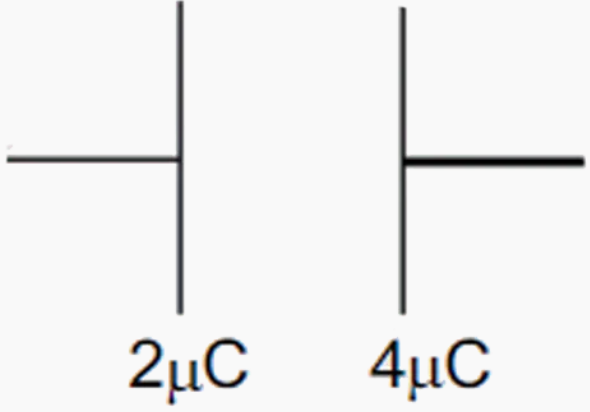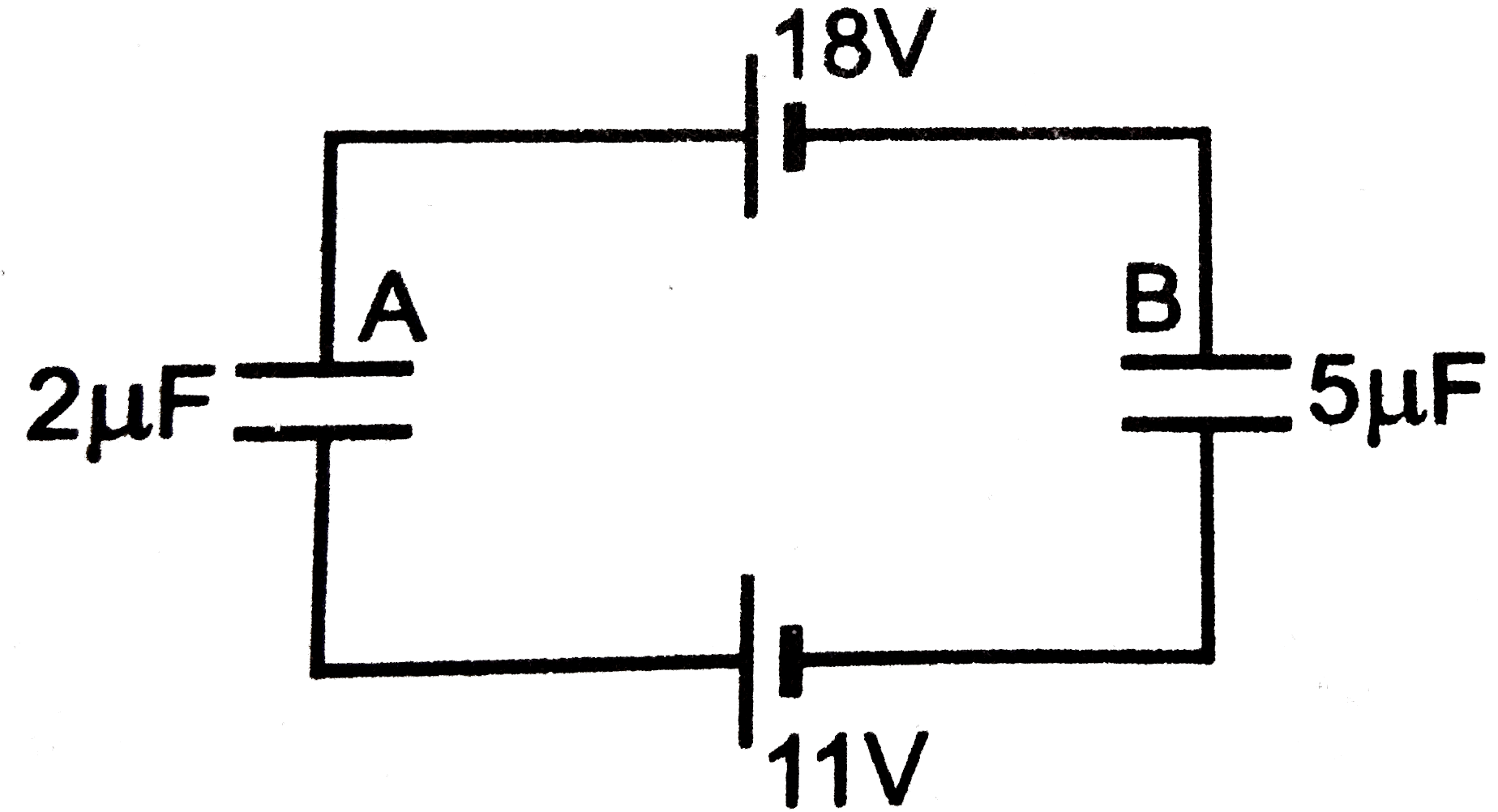One plate of a capacitor of capacitance 2μF has total charge +10μC and its other plate has total charge +40mUC. The potential difference between the plates is (in Volt).
7.5
15
25
50
The correct Answer is:A
To find the potential difference between the plates of the capacitor, we can follow these steps:
Step 1: Understand the given values
We have a capacitor with:
- Capacitance C=2μF=2×10−6F
- Charge on the first plate Q1=+10μC=10×10−6C
- Charge on the second plate Q2=+40μC=40×10−6C
Step 2: Calculate the net charge on the capacitor
The net charge Q on the capacitor can be calculated as:
Q=Q2−Q1=40μC−10μC=30μC=30×10−6C
Step 3: Relate charge, capacitance, and potential difference
The relationship between charge Q, capacitance C, and potential difference V is given by the formula:
Q=C⋅V
From this, we can express the potential difference V as:
V=QC
Step 4: Substitute the values into the formula
Now, substituting the values of Q and C into the equation:
V=30×10−6C2×10−6F
Step 5: Calculate the potential difference
Calculating the above expression gives:
V=302=15V
Final Answer
The potential difference between the plates of the capacitor is 15V.
---
We have a capacitor with:
- Capacitance C=2μF=2×10−6F
- Charge on the first plate Q1=+10μC=10×10−6C
- Charge on the second plate Q2=+40μC=40×10−6C
The net charge Q on the capacitor can be calculated as:
Q=Q2−Q1=40μC−10μC=30μC=30×10−6C
The relationship between charge Q, capacitance C, and potential difference V is given by the formula:
Q=C⋅V
From this, we can express the potential difference V as:
V=QC
Now, substituting the values of Q and C into the equation:
V=30×10−6C2×10−6F
Calculating the above expression gives:
V=302=15V
The potential difference between the plates of the capacitor is 15V.
Similar Questions
A charge of 1μC is given to one plate of a parailel - plate capacitor of capacitance 0.1μF and a charge of 2μC is given to the other plate . Find the potential difference developed between the plate .
View SolutionA capacitor has a capacitance of 7.28μF. What amount of charge must be placed on each of its plates to make the potential difference between its plates equAl to 25.0V?
View Solution
Knowledge Check
A parallel plate capacitor of capacitance 3μF has total charge +15μC on one plate and total charge −15μC on the other plate. The separation between the plates is 1mm. The electric field between the plates has magnitude: (in N/C)
A50B100C5000D10000A parallel plate capacitor of capacitance 1μF has a charge of +2μC on one of the plates and a charge of +4μC on the other. The potential difference developed across the capacitor is
A5VB2VC3VD1VIn a parallel plate capacitor of capacitor 1μF two plates are given charges 2μC and 4μC the potential difference between the plates of the capacitor is
 A2 voltB1 voltC4 voltD3 volt
A2 voltB1 voltC4 voltD3 volt
A parallel air capacitance 245μF has a charge of magnitude 0.48μC on each plate. The plates are 0.328mm apart.
(a) What is the potential difference between the plates?
(b) What is the area of each plate?
(c) What is the surface charge density on each plate?
View SolutionA parallel plate capacitor of capacitance 1μF has a charge of +2μC on one of the plates and a charge of +4μC on the other. The potential difference developed across the capacitor is
View SolutionTwo capacitors A and B of capacitances 2μF and 5μF are connected to two battery as shown in figure The potential difference in volt between the plate of A is

View SolutionIn an isolated parallel plate capacitor of capacitance C, the plates have charge Q1 and Q2. The potential difference between the plates is
View SolutionA capacitor of capacitance 15μF has a charge 30μC and stored energy is W. If charge increased to 60μC the energy stored will be.
View Solution